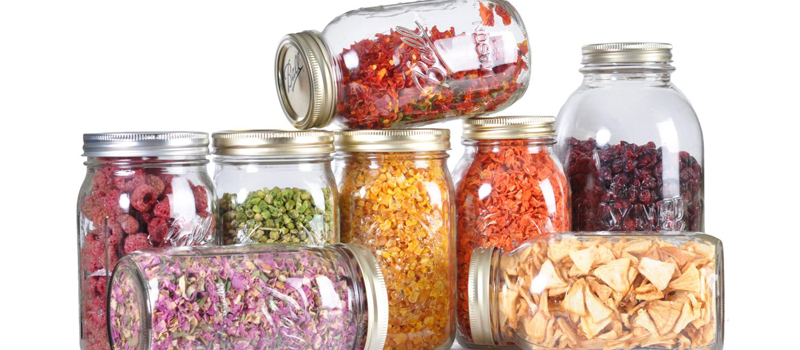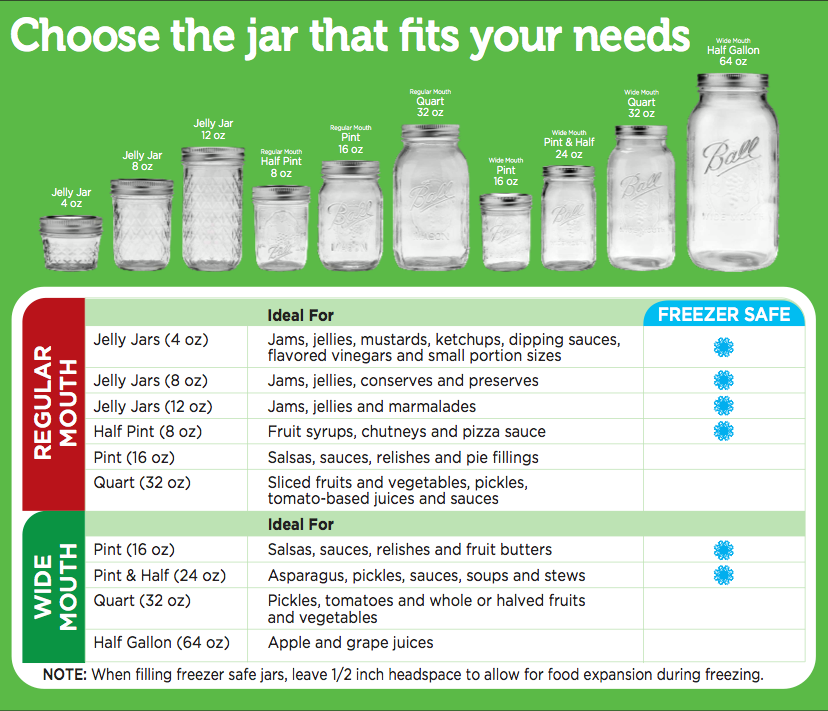When I recently did some organizing of my supplies, I was a bit surprised at the sheer number of canning jars I had placed into boxes. By the time I got to the 20th box, I admitted to myself that I am clearly a canning jar hoarder. That said, I don’t think I am in need of an intervention. Yet. On the contrary, I think everyone should own more versatile and beautiful canning jars.
Canning jars, also commonly referred to as Mason Jars, have a long and colorful history.
The History of Canning and Canning Jars
Canning as a method of preservation was first created during the time that Napoleon was in charge of the French Army. The army wanted a way to preserve food so that soldiers could be better nourished. The military offered a prize of 12,000 francs to the person who could come up with a solution to this issue.
It took 15 years for the prize to be awarded. After years of experimentation, Nicholas Appert, a Parisian candy maker, and chef won the prize in 1810 for his invention. The same year, he published the first book of food preservation, called L’Art de conserver les substances animales et végétales (or, in English, The Art of Preserving Animal and Vegetable Substances which you can view and download for free).
In the early 1800s, however, most people could not afford glass jars for food preservation, so they continued with their traditional methods until the Civil War, when John Mason invented the “Mason jar” with a reusable lid. Because of his ingenuity, to this day, many of us still refer to canning jars as “Mason jars” regardless of the brand.
Canning reached an all-time high during the 1940s when the government declared canning the contents of your victory garden to be a wartime obligation. At that time, over 75% of American families preserved food by canning it, and over 12 million gardens had been planted across the country.
Once the war was over, however, people returned to shopping at the grocery store, and the number of people who canned dropped and has continued to do so. Recently, though, as more people seek self-reliance due to climbing prices and terrible selections at the store, canning has experienced a bit of a renaissance and jars are back in style.
 The Different Types of Canning Jars
The Different Types of Canning Jars
The thing that makes jars so darned addictive is that they are as useful as they are lovely. Some antique jars come in shades of aqua, and some modern jars are available in blue, green, and purple.
Of course, one of the most frequent uses for jars is home preservation. Not only can you preserve pickles, jams, and jellies, but you can branch out into pressure canning to preserve low-acid foods like meats, vegetables, and entire meals. (If you are like me and have not yet gotten up the nerve to try pressure canning, read this! I guarantee you’ll be ready to take the plunge.)
Whatever you’re preserving, you need to choose the right jar for the job. Not only do jars come in different colors, but they also come in all sorts of shapes and sizes. This handy infographic can help.
How else can you use canning jars?
Canning jars are good for a lot more than just food preservation, though. They can also be used in some of the following ways:
Straight shouldered jars can be used to freeze food – just be sure to leave room for expansion.
Store leftovers in them instead of BPA-laden plastic containers.
They make charming, country-style vases for flowers from the garden.
Wide mouth jars make quirky drinking glasses.
Fill a half pint jar with water for a floating candle. You can add food color to the water to make it match your decor.
Store dried foods in them. Use a Foodsaver Vacuum Sealer Jar Attachment to remove the air for long term storage.
Store cutlery in them on the counter – tie some ribbon around the jars to coordinate with your kitchen.
Paint a square on them with chalkboard paint so you can write the name of the food you are storing in them. You can also purchase chalkboard labels for the lids.
If you purchase herbs in bulk (or harvest them from your garden) you can store the dried herbs in a canning jar.
Use smaller jars for sewing notions or small craft supplies.
Pour your own jar candles in them.
Store candy in them for an old-fashioned, decorative holiday display.
Glue coarse sandpaper to the lid and store matches in it for a water resistant container with a strikeable top.
And a bunch of other stuff!
Change up the lids and do neat stuff with your canning jars.
Of course, the nifty lids that are now available take the versatility of canning jars to a whole new level. Check out some of these tops you can get to make your jars serve different purposes:
These lids have a hole in them for straws, making this the perfect beverage container for outdoors: Ball Wide Mouth Mason Jar with Sip and Straw Lids
These lids have a pour spout for easy dispensing of whatever dry item you’ve stored in the jars: reCAP Mason Jars Pour Cap
And these lids have a spout for dispensing liquids: Magnuson mason jar pouring spout, regular size.
These lids have cutouts. You can use them to hold scented items like potpourri, or you can use them to hold a homemade baking soda-based cleaning powder: Pewter Daisy Cut Out Lid for Mason Jars
These chalkboard lids can be used for labeling the contents of the jar: Chalk Tops – Reusable Chalkboard Lids for Mason Jars
These lids turn your jars into fermenting units: FARMcurious – Mason Jar Fermenting Kit
This lid is a soap or lotion dispenser. Mason Jar Soap/Lotion Dispenser Lid black
This converter top turns a mason jar into an oil lamp: Mason Jar Oil Lamp Burner Chimney Holders Turn Mason Jars Into Nostalgic Oil Lamps
And finally, these lids turn your jars into adorable and useful little solar lanterns, either hanging or tabletop: Hanging Solar Lid Light or Hanging Solar Lid Light
How do you use your canning jars?
I am a complete advocate for canning and preserving food on the homefront of the foods you would like to eat. Whether it is from your own garden now or from the store shelves, now is the time to create your library of Canning Recipes (hundreds can be found online for FREE) and get started. The peace of mind you will be able to have when you need the food you have preserved, for the winter months or economic downturns.
Need to get a guide on how to do your own canning? Click Here to get the latest step-by-step for water bath canning and if you are looking to do it with a Pressure Canner, Click Here to get the low down, Now, all you need to do is get canning!


 The Different Types of Canning Jars
The Different Types of Canning Jars



